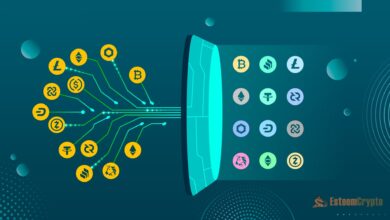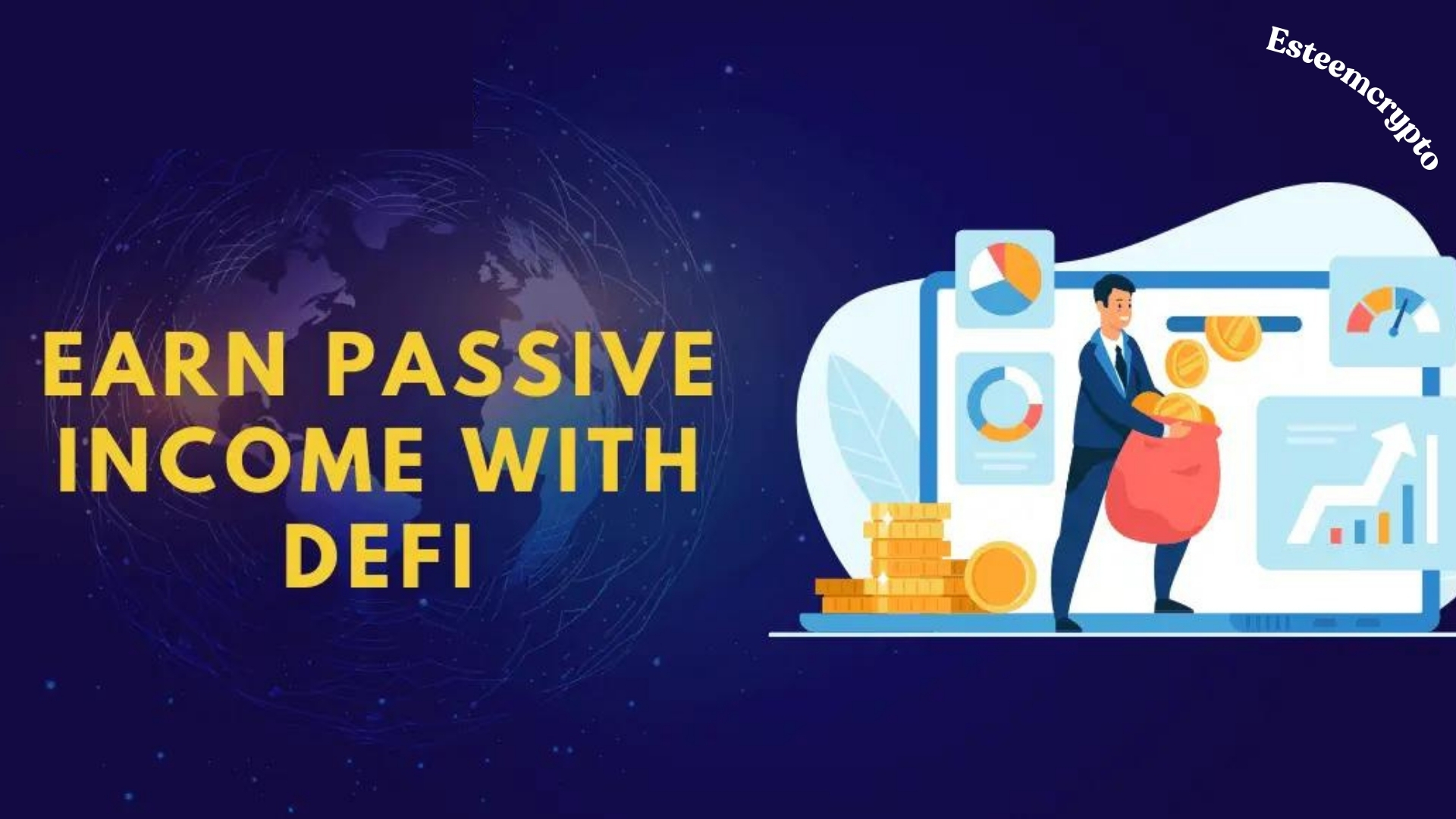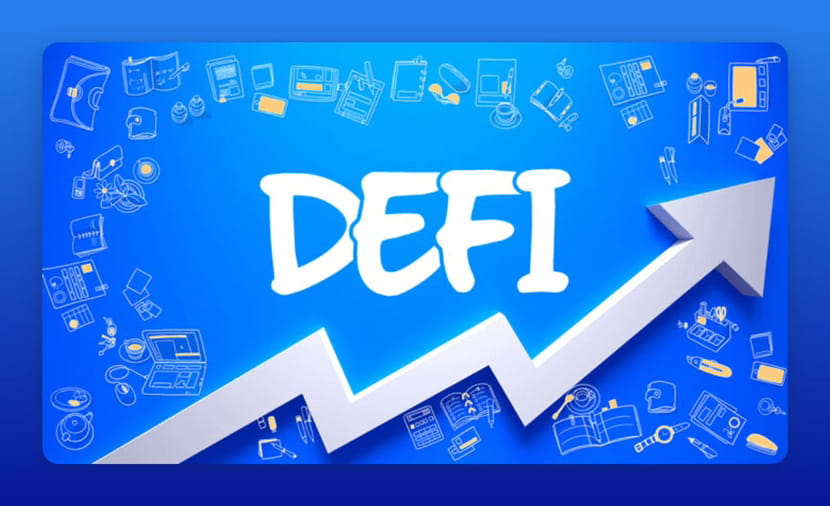DeFi Development: Steps for Developing DeFi Apps
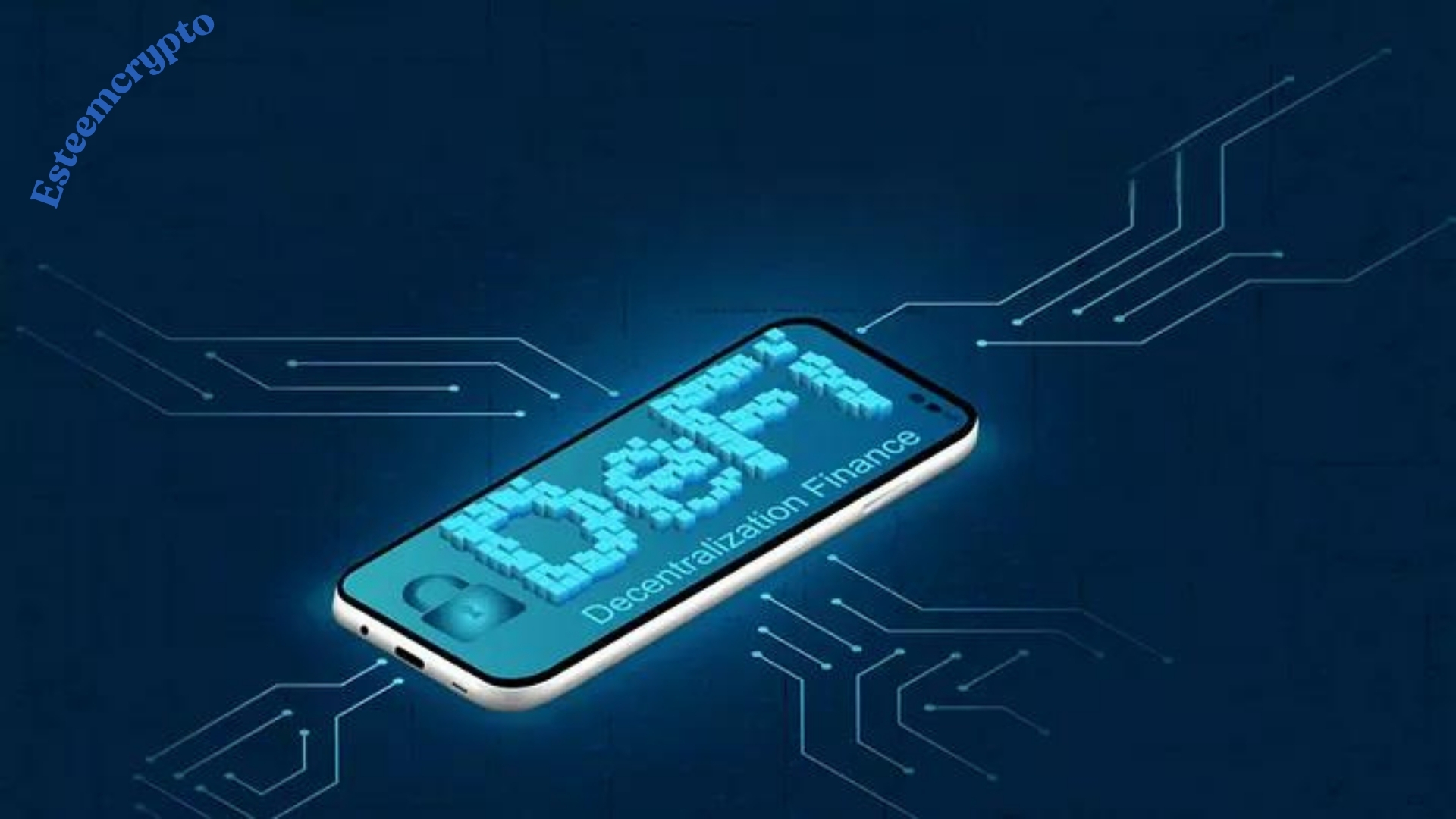
DeFi Development. New use cases and trends have emerged as a result of the enormous impact that technology has had on several sectors. A prime example of a technology like this that has revolutionized many sectors is blockchain. Blockchain technology has had the most significant effect on the financial services sector. Knowing that blockchain technology has enabled the decentralization of financial services, you have decided to study the basics of developing DeFi applications. Blockchain technology is helping the financial services sector decentralize by eliminating the need for a single point of failure. By 2030, the DeFi market can be worth more than $232 billion, according to market forecasts. Companies are eager to take advantage of DeFi since it will make their consumers’ financial transactions easier.
This shift from centralized to decentralized networks in the financial sector has been driven by decentralized finance or DeFi. Businesses can develop a DeFi app for various purposes, such as creating innovative solutions for financial services or providing new ways to conduct financial transactions. The expanded range of opportunities is the most intriguing aspect of DeFi. Putting technology first and doing away with intermediaries is one of DeFi’s primary goals. Using the following DeFi development guide, we will learn how to create DeFi apps from the ground up.
What are DeFi Applications?
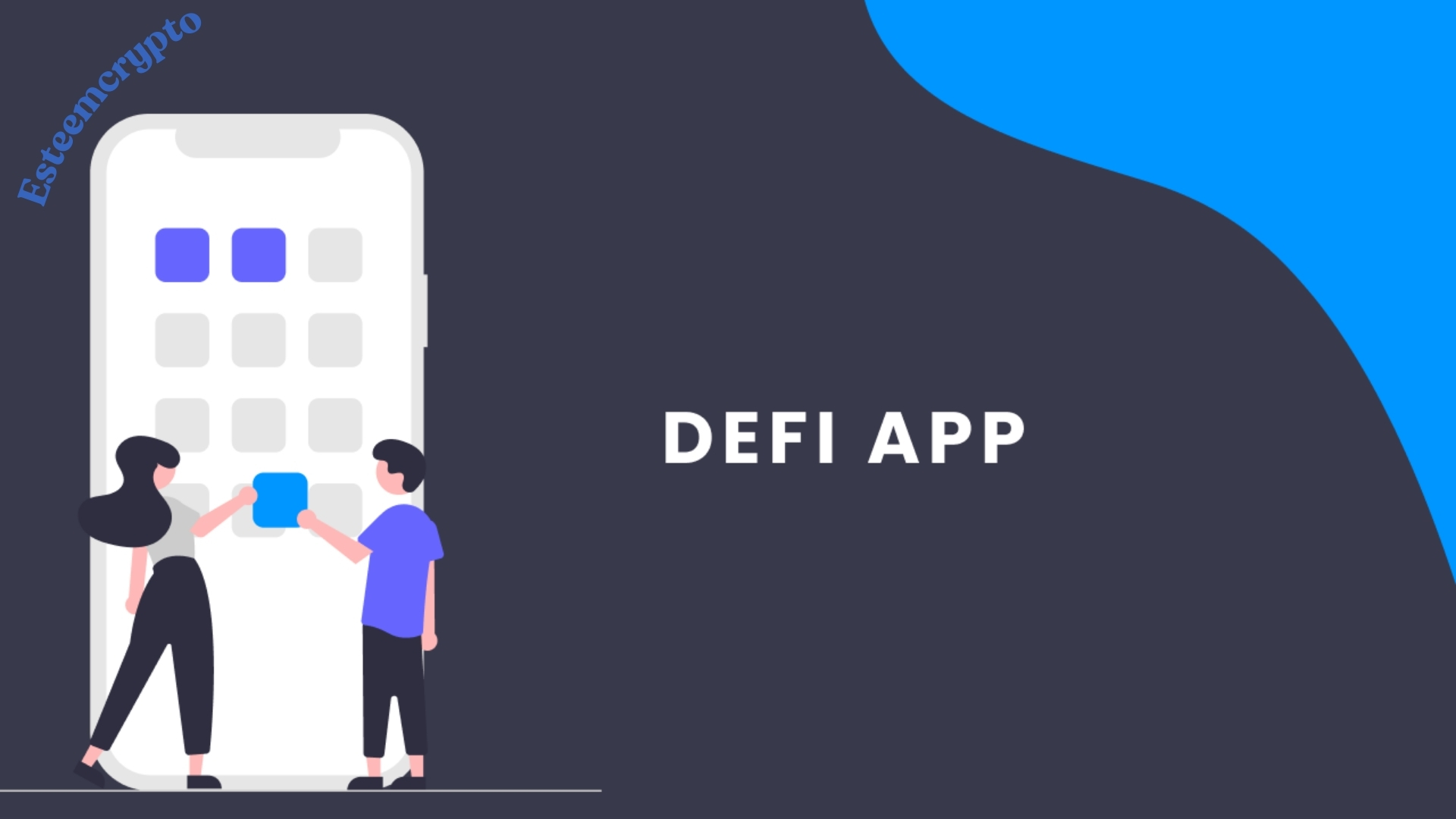
The value of DeFi applications should be among your initial learnings in decentralized finance development. “decentralized finance” (DeFi) refers to a wide range of financial products and services that use blockchain technology. As an alternative to conventional banking, DeFi solutions aim to supplant antiquated methods of providing financial services with cutting-edge innovation that uses open-source protocols. Decentralized finance’s use of blockchain technology and smart contracts makes possible more open and user-friendly financial solutions. DeFi lets you engage with NFTs, digital assets, and cryptocurrencies.
Envision a future where all your financial needs are met with the same level of promptness and convenience. No one entity will be able to access or manipulate your data in any way. A DeFi development guide is in high demand because more and more individuals and companies are interested in using DeFi. Using blockchain technology, decentralized finance provides a global perspective on the financial sector. The services offered by DeFi include loans, risk insurance, digital currency trading, and the ability to speculate on price changes.
Essential Traits of DeFi Application
DeFi apps rely on blockchain technology, providing a distributed ledger that stores data in blocks. Time stamps arrange the data blocks or transaction blocks on a chain chronologically. This causes the data to become unchangeable and the transactions to be final. It can guarantee that all DeFi-related transactions are trustworthy and open.
Decentralization
Conventional financial frameworks have dominated the world of finance. Using the DeFi development guide, you may find out how to fix the problems with centralized finance. The participation of central institutions or entities in the administration and oversight of monetary transactions is the primary drawback of centralized finance. Decentralized financial applications lessen reliance on intermediaries by decentralization. Building an ecosystem based on trust and openness can be facilitated by this. With DeFi, users can take charge of their transactions and eliminate obstacles.
Interoperability
Since DeFi protocols can communicate, interoperability is another critical feature of DeFi apps. Possible benefits include sharing features, trading assets quickly, and exchanging data. Thanks to interoperability, new compound applications can be built where DeFi protocols can use one other’s strengths. Consequently, new ideas for creating a robust and interdependent DeFi ecosystem can flourish because of interoperability.
Non-Custodial Control
Ensuring non-custodial control is the next critical component when building a DeFi app. Users are granted non-custodial authority over their assets using DeFi applications. This means that in every financial transaction, users would have complete control and ownership of their funds. To guarantee that customers retain ownership of their assets, DeFi apps utilize intelligent contracts.
Programmability
Smart contracts run on blockchain networks and are used by DeFi applications. Smart contracts are crucial for automating financial transactions and other DeFi-related processes. To facilitate complicated monetary operations, developers can employ autonomous smart contracts. Also, all financial processes run well thanks to decentralized finance development. In addition, smart contracts can change to fit various needs and scenarios when providing financial services.
Liquidity Provision
Among the many features that set DeFi apps apart is their capacity to facilitate liquidity provision. By participating in liquidity pools, users of DeFi platforms can earn interest or incentive tokens for their assets. Borrowing and smooth trading activities are made possible by the liquidity that the DeFi platforms receive from the pooled resources. Compared to more conventional financial methods, the decentralized nature of liquidity provision in DeFi apps is striking.
What are the Important Functionalities of DeFi Apps?
Among a DeFi development guide’s most salient features is an outline of the capabilities required by DeFi applications. DeFi applications can assist with various tasks, in addition to the advantages of autonomy and decentralization. Conventional financial process transformation is the primary focus of DeFi use cases.
Stablecoins
In the DeFi ecosystem, stablecoins stand for a reliable set of assets. The increased volatility that investors face with cryptocurrencies is their biggest concern. Stablecoins are among the most innovative forms of digital currency since they are pegged to the value of reserve assets.
Tokens
One crucial part of learning DeFi development best practices is dealing with DeFi currencies mined on pre-existing blockchains. Also, underlying assets like fiat money or gold can peg DeFi tokens.
Liquidity Mining
Another significant feature of the DeFi ecosystem is liquidity mining. It incorporates the usage of cryptocurrency to ease liquidity and goes by another name, yield farming. To effectively regulate trade operations, decentralized exchanges use tools like Automated Market Maker. Users can generate passive income by exchanging tokens to trade cryptocurrencies in the liquidity pool.
Exchange
Users can trade cryptocurrencies directly on DeFi exchanges, cutting out the intermediaries. Direct and peer-to-peer trading is made possible by the DeFi exchange apps through the use of smart contracts.
Staking
Staking is another feature of DeFi that allows users to validate cryptographic transactions using idle currency. You must know that the Proof of Stake consensus prioritizes ownership over proof of effort, making staking viable.
Borrowing and Lending
Pay close attention to the borrowing and lending functionalities in DeFi apps if you want to know how to start a DeFi development. The loan and borrowing apps primely illustrate how DeFi has been developing new alternatives to conventional financial use cases. Such apps use smart contracts as a technical go-between, guaranteeing that lenders and borrowers adhere to the terms and conditions.
Wallets
Wallets are a prominent part of the DeFi ecosystem, allowing users to examine decentralized finance differently. At this early stage, centralized authority, like a digital wallet, is necessary for cryptocurrencies. The cryptocurrency exchange procedure relies on digital wallets to store the key. Users may have full command of their assets and keys with DeFi wallets.
Steps to Develop a DeFi App from Scratch

The development of novel DeFi solutions has attracted interest due to the rising popularity of DeFi development. If you want to know what the pros recommend for creating a DeFi app, study it. To build a DeFi app, adhere to these basic guidelines.
Identification of the Use Case
Determining the use case is the initial stage in creating a DeFi app. Among the many applications that DeFi can handle are stablecoins, lending and borrowing, DEXs, and DAOs. It would be best to specialize in developing DeFi apps that cater to specific customer needs. To effectively describe the architecture of your DeFi software, it is essential to examine its use cases accurately.
Choose the Right Tech Stack
Choosing the right technology stack is next on the list of must-dos for developing decentralized finance. You must be careful when selecting components for the DeFi app’s core features. Picking a blockchain network to build the DeFi app on is the first order of business. Among the several blockchain technologies available for use in DeFi projects, Ethereum stands out. Regarding creating DeFi applications, other notable protocols include Polygon and Solana.
Smart contracts are decent. It would be best to emphasize tools, frontend/backend frameworks, and user interface development tools, which are other essential components you’d highlight. Innovative contract development tools like Solidity and smart networks like OpenZeppelin, Truffle, Hardhat, and Ganache are part of the tech stack for building a DeFi app.
Another crucial step is to choose a safe and essential decentralized storage solution, like IPFS. The web3.js and web3.py packages are considered development tools for DeFi. Also, you’d need to know your way around Node.js and Java for the backend and frontend frameworks like React for the frontend. NoSQL, PostgreSQL, and MySQL are database technologies that must be part of the tech stack for DeFi development projects. For user interface development, you should highlight the web3.js and ethers.js frameworks.
Definition of App Architecture
Once the technology stack for DeFi development has been determined, you should clarify the concept of app architecture. Along with explaining how smart contracts guarantee governance for financial transactions, the architecture defines the frontend and backend functionalities. For the DeFi app to accommodate your intended use cases, specify the features and functionality you want to be included.
Develop the UI/UX
To guarantee effective engagement, user experience prioritizes both the visual appeal of the app and the mapping of the user’s route. Developers should consider how consumers show features and functionalities while designing the user interface. Developers need to draw user flows to create the perfect user interface for DeFi apps that can assist with the main tasks. To ensure that DeFi apps are accessible to everyone, you should prioritize functional usability testing.
Emphasize the Security Posture
As a developer, one of your priorities should be the security of your DeFi apps. While you learn DeFi development, pay attention to the fundamental best practices for guaranteeing security. When creating smart contracts, developers must pay close attention to the scripting of the code. The updates for creating AI contracts and deploying vulnerability scans are also your responsibility.
Conclusion
One of the most impressive aspects of the Bitcoin landscape is the development of decentralized finance solutions. The development of decentralized banking is a top priority in the coming web3 landscape, and that much is certain. A decentralized alternative to traditional financial services, DeFi systems have several potential benefits. Many problems, such as censorship and transparency, have beset conventional financial service delivery methods. By delving into various DeFi use cases, you may come up with creative solutions that have the potential to revolutionize the financial services industry.
Also Read: What Is BitFi: The DeFi Guide for the Bitcoin Network


